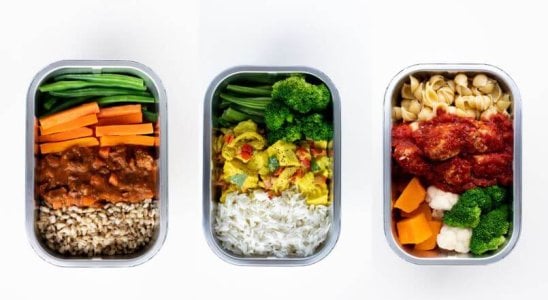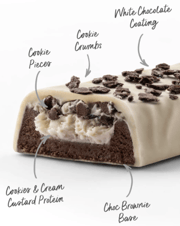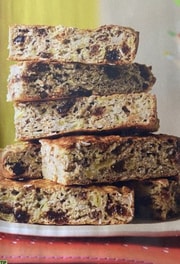Shocking reports: Some of Australia's most vulnerable citizens are facing worse dietary standards than prisoners
- Replies 45
Are Australia’s most vulnerable citizens receiving the care they deserve?
This question comes after a recent story brought to light an issue that is reportedly becoming common in Australia. In some cases, elderly residents living in aged-care facilities appear to be receiving sub-par meals. Recently, someone even went as far as comparing aged-care meals to the food served to prisoners, with an overwhelming consensus agreeing prisoners are eating better.
It appears that Australia’s 43,000 prisoners have better dietary standards than those living in some aged-care homes.
Some prisons allow their inmates to plan their own meals and order ingredients, which helps them cook delicious food using recipes from all over the world, including Mexican beef, Thai green curry, and peri-peri chicken.
These meals were in stark contrast to the food served to residents in Regis Aged Care in Brighton, Melbourne, according to Andrew Phelan. His mum is a resident at the facility, which was recently awarded four out of five stars.
Mr Phelan alleged that his mum was given a ‘small handful’ of soggy chips, a kid-sized fish cocktail, and a blob of tartare sauce for dinner.
Meanwhile, ex-convict Jackson Allum (not his real name), who spent two years in several NSW jails of varying security levels, including Silverwater Correctional Complex, and Bathurst, Grafton, Junee, and Glen Innes correctional centres, recently revealed the prison food inmates ate, including what was considered a ‘special treat’.
Based on his account, the highlight of the menu rotation was a portion of chicken devil wings. For breakfast, inmates received cereal or bread. Lunch on weekdays consisted of about two defrosted sandwiches with rotating fillings of corned beef, tuna, ham and cheese, chicken, schnitzel, egg, and Vegemite.
For weekend lunches, sandwiches were swapped out for similarly defrosted sausage rolls or pigs in a blanket (frankfurts in pastry).
For dinner, prisoners were left with a rotation of oven-heated frozen meals such as curries, stews, and various iterations of meat-and-three-vegetables dinner.
‘They sound appetising, when you hear it, you’re like “beef with black bean sauce, that sounds pretty good,” but it’s not. But it’s not slop either. You know in the movies when they give you grey slop on a tray, it’s not like that,’ Mr Allum said.
In contrast, Mr Phelan shared that the cold fish and chips is what passes for dinner at the aged care facility in Melbourne, where two staff serve 12 people.
‘Mum's bed doesn't work. The food is cold. It's been left in Mum's room on a tray and if I wasn't here there's no way she would be able to get it,’ Mr Phelan said.
He added that he will be moving his mother to a new facility, saying: ‘How that place got 4 stars is beyond me.’
In a statement made by Dietitians Australia last year, experts are ‘urging the strained aged care sector to add food and nutrition to its priorities’.
Julie Dundon, an accredited Practising Dietitian and Aged Care Subject Matter Lead for the organisation, explained why residential homes and home carers must take immediate action.
She shared: ‘We know nutrition and mortality are closely linked to nutritious food with quality of life and better mental health. We’re deeply concerned by reports of food supply shortages and staffing issues resulting in grossly inadequate, or even missed meals in aged care facilities.

Robert Hunt, the Chief Executive Officer of Dietitians Australia, explained in the media statement how malnutrition in the aged care sector has been a long-time concern for the organisation.
He explained: ‘It’s a shame that our nation would spend $10 a day feeding prisoners and only $6 a day feeding our elderly.’
He added that incentivising facilities to reach out for the assistance of a dietitian may offer support to workers and ‘boost the resilience of residents’ through proper nutrition.
Dietitians Australia has been advocating for the federal government to take critical steps that will address what they believe to be a ‘30-year pandemic’ of malnutrition in the aged care sector.
In jails, food varies between prisons, security levels and different states. According to a spokesperson for the South Australian Department of Corrective Services, prisoners in low-security areas can plan, budget, buy and cook their meals.
Mr Allum supported this information and said that in lower security prison areas, inmates are given cans of tuna and packets of instant noodles, and are given the freedom to buy more food in the prison shop.
There are also alternative prison meals available for inmates with different cultural, religious and medical needs.
Meanwhile, in a 2018 report by the Australian Medical Association (AMA), it was discovered that Australian pensioners are ‘fed on just $6 a day’. Michael Gannon, who was president of the AMA at the time, claimed that more money is spent on his pet’s food.
‘My children’s guinea pigs get fresh ingredients and more money spent on them…It’s a national disgrace the way we treat our aged,’ he stated.

What are your thoughts on this story? Do you believe that prisoners are being treated better than those living in aged care facilities? Have you experienced this first-hand? Share your thoughts with us in the comments below!
This question comes after a recent story brought to light an issue that is reportedly becoming common in Australia. In some cases, elderly residents living in aged-care facilities appear to be receiving sub-par meals. Recently, someone even went as far as comparing aged-care meals to the food served to prisoners, with an overwhelming consensus agreeing prisoners are eating better.
It appears that Australia’s 43,000 prisoners have better dietary standards than those living in some aged-care homes.
Some prisons allow their inmates to plan their own meals and order ingredients, which helps them cook delicious food using recipes from all over the world, including Mexican beef, Thai green curry, and peri-peri chicken.
These meals were in stark contrast to the food served to residents in Regis Aged Care in Brighton, Melbourne, according to Andrew Phelan. His mum is a resident at the facility, which was recently awarded four out of five stars.
Mr Phelan alleged that his mum was given a ‘small handful’ of soggy chips, a kid-sized fish cocktail, and a blob of tartare sauce for dinner.
Meanwhile, ex-convict Jackson Allum (not his real name), who spent two years in several NSW jails of varying security levels, including Silverwater Correctional Complex, and Bathurst, Grafton, Junee, and Glen Innes correctional centres, recently revealed the prison food inmates ate, including what was considered a ‘special treat’.
Based on his account, the highlight of the menu rotation was a portion of chicken devil wings. For breakfast, inmates received cereal or bread. Lunch on weekdays consisted of about two defrosted sandwiches with rotating fillings of corned beef, tuna, ham and cheese, chicken, schnitzel, egg, and Vegemite.
For weekend lunches, sandwiches were swapped out for similarly defrosted sausage rolls or pigs in a blanket (frankfurts in pastry).
For dinner, prisoners were left with a rotation of oven-heated frozen meals such as curries, stews, and various iterations of meat-and-three-vegetables dinner.
‘They sound appetising, when you hear it, you’re like “beef with black bean sauce, that sounds pretty good,” but it’s not. But it’s not slop either. You know in the movies when they give you grey slop on a tray, it’s not like that,’ Mr Allum said.
In contrast, Mr Phelan shared that the cold fish and chips is what passes for dinner at the aged care facility in Melbourne, where two staff serve 12 people.
‘Mum's bed doesn't work. The food is cold. It's been left in Mum's room on a tray and if I wasn't here there's no way she would be able to get it,’ Mr Phelan said.
He added that he will be moving his mother to a new facility, saying: ‘How that place got 4 stars is beyond me.’
In a statement made by Dietitians Australia last year, experts are ‘urging the strained aged care sector to add food and nutrition to its priorities’.
Julie Dundon, an accredited Practising Dietitian and Aged Care Subject Matter Lead for the organisation, explained why residential homes and home carers must take immediate action.
She shared: ‘We know nutrition and mortality are closely linked to nutritious food with quality of life and better mental health. We’re deeply concerned by reports of food supply shortages and staffing issues resulting in grossly inadequate, or even missed meals in aged care facilities.

Mr Phelan shared this photo on social media to show the state of his mum’s meals in the aged care residence. Credit: Twitter
He explained: ‘It’s a shame that our nation would spend $10 a day feeding prisoners and only $6 a day feeding our elderly.’
He added that incentivising facilities to reach out for the assistance of a dietitian may offer support to workers and ‘boost the resilience of residents’ through proper nutrition.
Dietitians Australia has been advocating for the federal government to take critical steps that will address what they believe to be a ‘30-year pandemic’ of malnutrition in the aged care sector.
In jails, food varies between prisons, security levels and different states. According to a spokesperson for the South Australian Department of Corrective Services, prisoners in low-security areas can plan, budget, buy and cook their meals.
Mr Allum supported this information and said that in lower security prison areas, inmates are given cans of tuna and packets of instant noodles, and are given the freedom to buy more food in the prison shop.
There are also alternative prison meals available for inmates with different cultural, religious and medical needs.
Meanwhile, in a 2018 report by the Australian Medical Association (AMA), it was discovered that Australian pensioners are ‘fed on just $6 a day’. Michael Gannon, who was president of the AMA at the time, claimed that more money is spent on his pet’s food.
‘My children’s guinea pigs get fresh ingredients and more money spent on them…It’s a national disgrace the way we treat our aged,’ he stated.
Key Takeaways
- In some instances, Australia's 43,000 prisoners are better fed than aged-care residents.
- Prisoners in low-security areas can plan and cook their own meals, while in some minimum-security prisons groups of inmates can order food and cook together.
- In contrast, Andrew Phelan’s mother at Regis Aged Care in Brighton, Melbourne was served cold fish and chips for dinner.









